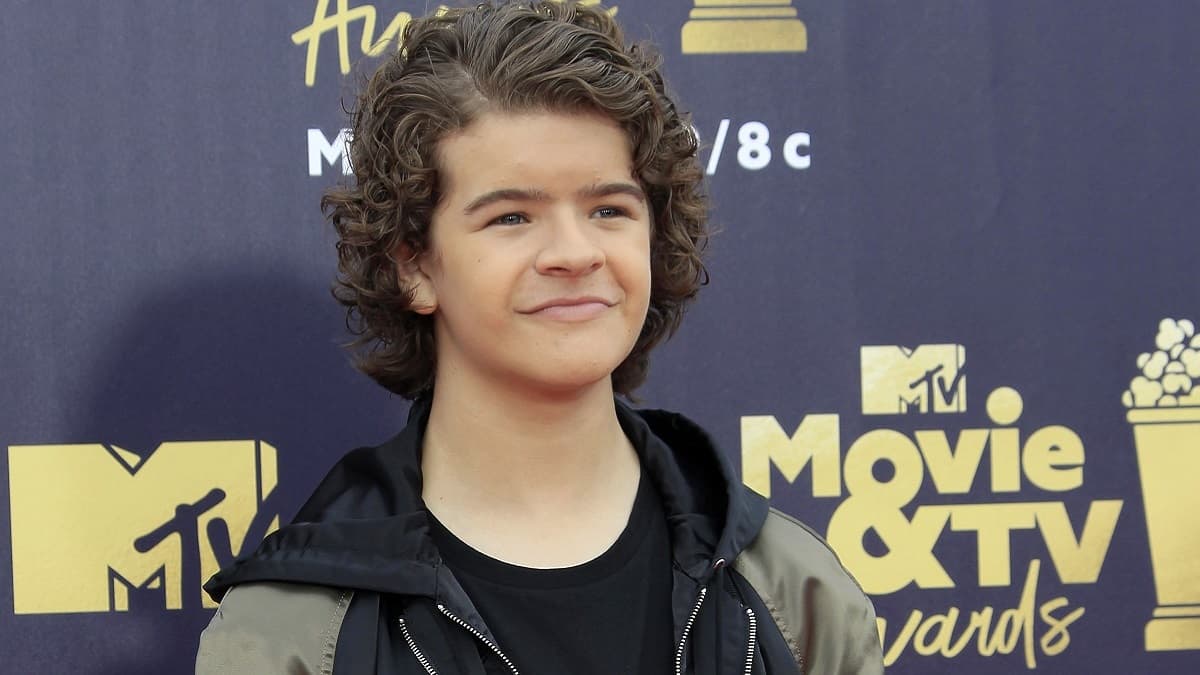
Gaten Matarazzo, who plays Dustin Henderson on Stranger Things, suffers from a rare condition called cleidocranial dysplasia (CCD).
The 17-year-old TV star has dental abnormalities, and his collar bones are missing due to the condition.
Fans learned in the first episode of Stranger Things Season 1 that Matarazzo’s character, Dustin, had the condition when he responded to a bully who called him “toothless.”
The bully’s companion then asked Dustin to do the “arm thing.” Dustin held out his arms and cracked his shoulders.
Dustin received dentures in Season 2, but he stopped using them in Season 3 after his girlfriend Suzie said she preferred kissing him without teeth.
Since fans learned that Dustin suffers from CCD, they have been searching online for information about cleidocranial dysplasia, raising awareness about the condition.
Matarazzo recently appeared on talk shows to help people better understand the rare condition.
“It affects your facial growth, your skull growth; it affects your teeth, so that’s why I don’t have any,” he said during a visit to The Jonathan Ross Show. “I feel like putting it into the show is really raising awareness for it.”
Last month, Matarazzo underwent surgery to extract 14 of his supernumerary teeth, which then exposed six of his adult teeth.
He said that this was his fourth surgery, and it was a success, hoping this is the final one he needs.
What is cleidocranial dysplasia or CCD?
Cleidocranial dysplasia is a rare disorder caused by a mutation of the genes that control the development of bones, cartilage, and teeth. The condition affects the growth and development of teeth and skeletal structures, especially the skull and collarbones.
The nature of the symptoms and severity vary.
Many with the condition have underdeveloped or missing collarbones, known as clavicles. They have narrow and sloping shoulders as a result.
Due to narrow or absent collarbones, many sufferers can bring their shoulders closer together in front of their bodies, as Dustin did in the first episode of Stranger Things.
People with the condition also have delayed maturation and malformation of bone structures, including the structures of the skull.
They often have dental abnormalities, such as delay in the loss of primary or baby teeth. Many have impacted teeth (teeth are embedded inside the gums) and have delayed appearance of secondary or adult teeth.
Sufferers also often have osteoporosis due to decreased bone density. Many have hearing loss and increased susceptibility to upper respiratory tract infections.
Physical abnormalities often associated with the condition include unusually short shoulder blades or scapulae, a curvature of the spine known as scoliosis, flat feet, knock knees, small upper jaw, flat nose, eyes set wide apart (hypertelorism), prominent forehead, and unusually short skull.
Cleidocranial dysplasia (CCD) has no cure, and doctors only try to alleviate or manage the symptoms through good nutrition, and if necessary, corrective surgical procedures.